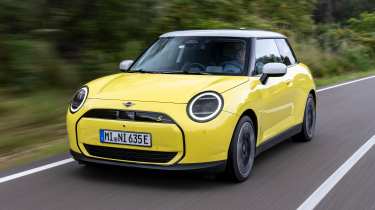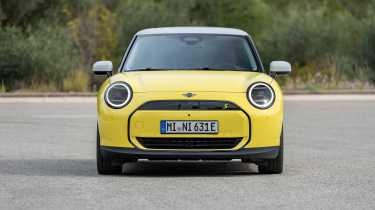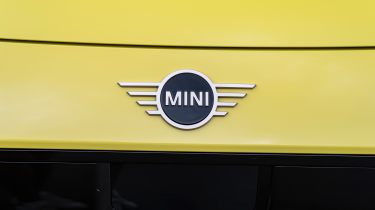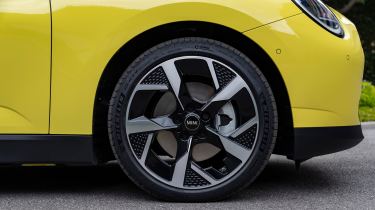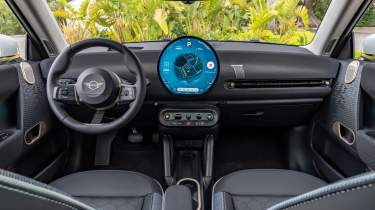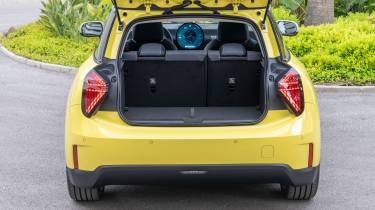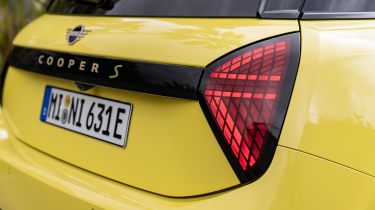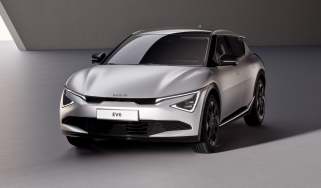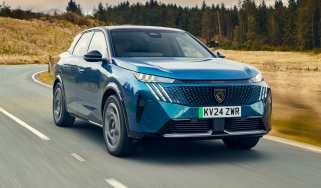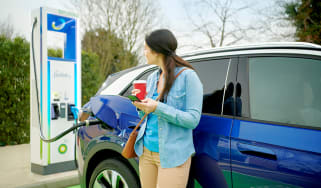MINI Cooper review: worthy successor to a well-loved supermini
The latest MINI Cooper provides all of the entertainment, quality and style that we’ve come to expect, and more
Pros
- Well-built
- Entertaining to drive
- Up-to-date tech
Cons
- Mediocre battery range
- Not exactly cheap to buy
- Snug back seats
| Model | Range | Wallbox charge time | Rapid charge time |
| Cooper E | 190 miles | 4.25hrs (0-100%, 7.4kW) | 28mins (10-80%, 95kW) |
| Cooper SE | 250 miles | 5.25hrs (0-100%, 7.4kW) | 30mins (10-80%, 95kW) |
MINI Cooper verdict
Every new MINI seems to divide opinion between modern supermini buyers and fans of the original, but there’s little doubt that the new MINI Cooper is an enjoyable and refined addition to this decades-long bloodline.
Electric power means the MINI shouldn’t break the bank when it comes to running costs, and the maximum battery range of between 190 and 250 miles should prove adequate for most drivers, even if it isn't exactly class-leading. A £30,000 starting price means the MINI Cooper now demands more money for its added sophistication.
Range details, specs and alternatives
Although the word ‘iconic’ is thrown around left, right and centre these days, there really is no better term to describe the original Mini. Alec Issigonis’s lovable, budget-oriented and family-friendly little car revolutionised the market when it arrived in 1959, and went on to develop a huge and fiercely loyal fanbase during its 41-year production run.
Today, the original car’s status means any new addition to the MINI line-up faces a serious amount of scrutiny. There’s the regular debate among purists about whether the new MINI models are worthy of the badge because of their size. As the smallest member of the brand’s modern line-up, the MINI Cooper is technically the closest to the original in ethos. Despite having grown significantly through the generations, it still has the potential to placate those outraged by the Aceman and Countryman SUVs by delivering at least some of charm, fun and affordability that characterised the original car.
It’s in the pricing department where the latest MINI Cooper gets off to a bit of a shaky start. The entry-level Cooper E starts from £30,000 in Classic trim, and this places it above rivals such as the Fiat 500e and Vauxhall Corsa Electric, although it does just manage to undercut the BYD Dolphin and Peugeot E-208. It’s not just inflation which has nudged the MINI’s price upwards, though, as the level of quality and refinement on offer have taken a big step towards the higher end of the small car market, too.
While both the interior and exterior designs have their fair share of retro flair, the Cooper is a thoroughly modern car where it counts. The materials all feel premium and well put-together (as does the switchgear), the classic circular screen in the centre of the dash is bright and responsive to use, and there’s a healthy dose of safety tech thrown-in as standard.
Another crucial characteristic for any MINI is the way it drives, and the single front-mounted electric motor certainly provides a familiar level of punch to make sure the experience isn’t too different from the petrol engines of previous generation cars.
There are two variants of the fully-electric MINI Cooper to choose from: S or SE. The S produces 181bhp, which is good for a 0-62mph time of 7.3 seconds and a 99mph top speed. This version is powered by a 40.7kWh (36.6kWh net) battery with a claimed maximum range of 190 miles.
Alternatively, buyers can opt for the more powerful Cooper SE. This uses the same single motor setup but power is boosted to 215bhp. It brings the 0-62mph sprint time down to 6.7 seconds and increases the top speed to 106mph. The battery on this version is larger, too, at 54.2kWh (49.2kWh net). This unit claims up to 250 miles between charges, while both battery packs have a peak charging speed of 95kWh. MINI is also offering petrol engines with the car.
On top of these two EV powertrain options, there are also three trim levels to pick from, and these focus on the cosmetic side of things. The cheapest trim level is the Classic, and this offers a choice of four body colours along with two roof colours. In the middle of the range is the Exclusive, which offers three roof colours and brightens up the cabin with upgraded materials. The range-topping Sport gets its own variety of body paint colours as well as black styling highlights and cord upholstery.
Every MINI Cooper comes with useful creature comforts such as cruise control, a rear-view camera and a heated steering wheel, but opting for the pricier SE brings additional kit including LED headlights, heated front seats and wireless phone charging. On top of this choice, there are a number of option packs (which MINI calls Levels) which add in even more extras like a panoramic roof, a Harmon Kardon sound system, electric seat adjustment and larger wheels.
Range, battery size & charging
| Model | Range | Wallbox charge time | Rapid charge time |
| Cooper E | 190 miles | 4.25hrs (0-100%, 7.4kW) | 28mins (10-80%, 95kW) |
| Cooper SE | 250 miles | 5.25hrs (0-100%, 7.4kW) | 30mins (10-80%, 95kW) |
Alongside three cosmetic trims, there are two core variants of the MINI Cooper to choose from: the Cooper E or Cooper SE. Both are front-wheel drive and powered by the same single electric motor. The key differences between the two are their power outputs and battery packs.
The Cooper E is powered by a 40.7kWh (36.6kWh usable) battery, while the hotter Cooper SE is fitted with a larger 54.2kWh (49.2kWh usable) unit. In order to help boost efficiency, every MINI Cooper receives a heat pump as standard.
The MINI Cooper E claims up to 190 miles of battery range on the WLTP combined cycle, while the Cooper SE’s larger battery boosts this figure to 250 miles.
Neither of these figures are particularly groundbreaking, but they should prove more than adequate for most peoples’ everyday needs. It’s important to remember, though, that specification will have an impact on these final figures, as larger wheels can affect efficiency.
The MINI’s 95kW peak charging speed is another figure that isn’t about to redefine the class. Due to the reasonably small size of the two batteries on offer, though, this is still enough to ensure that rapid 10-80% charges can be taken care of in a reasonable amount of time. The Cooper E’s battery will be topped-up in as little as 28 minutes, while the Cooper SE will take around half an hour.
If you’re plugging in at home, you won’t have to wait too long, either. Hook up to a typical 7.4kW wallbox charger and the Cooper E will be fully-charged in around 4.25 hours. The Cooper SE will take just over 5 hours.
Running costs & insurance
The original Mini was designed to provide affordable motoring for the masses, and while the latest MINI Cooper has evolved into a much fancier and high-tech offering, it still shouldn’t prove too demanding when it comes to day-to-day running costs.
Opting for the fully-electric MINI Cooper over the petrol model will mean a zero VED road tax bill until April 2025, as well as a temptingly low 2% Benefit-in-Kind tax rate for company car users.
Topping up the MINI at home should prove less costly than filling up with petrol, too, as the Cooper E’s 36.6kWh battery should only cost around £11 for a full charge at a typical rate of 30p/kWh. The Cooper SE’s 49.7kWh pack is also rather reasonable at around £15. As with any other EV, using a public charging station is likely to cost considerably more.
When it comes to the outright purchase price, the MINI’s £30,000 starting figure isn’t remarkably cheap, but it does manage to undercut some other electric superminis like the Peugeot E-208 and BYD Dolphin.
Insuring the fully-electric MINI Cooper shouldn’t prove too horrendous for most drivers with a few years of no-claims bonus under their belt, but new and inexperienced drivers may face heftier bills. The base Cooper E in Classic trim sits in insurance group 20, and the line-up goes as high as group 26E for the SE Sport.
Performance, motor & drive
| Model | 0-62mph | Top speed | Driven wheels | Power |
| Cooper E | 7.3s | 99mph | Front | 181bhp |
| Cooper SE | 6.7s | 106mph | Front | 215bhp |
Just like the many MINIs before it (including the original) the new Cooper provides a pleasant amount of performance punch without going over the top. The entry-level Cooper E will deal with the 0-62mph sprint in a respectable 7.3 seconds, thanks to its motor producing 181bhp and 290Nm of torque, and go on to a top speed of 99mph.
Both versions of the electric Cooper are heavier than their predecessors, though, weighing in at almost 1,700kg. Opting for the more-powerful SE, with its 215bhp and 330Nm, helps to give the Cooper a more enjoyable amount of oomph, even if it isn’t quite a hot-hatch. 0-62mph is dealt with in 6.7 seconds.
It’s the more powerful SE model which we tested and we’re pleased to say that the “go-kart” handling, for which MINIs have long been famed, is still present and correct in this fully-electric model. The Cooper manages to hide its bulk rather well when you aim it towards a corner, with minimal body roll and plenty of grip at your disposal.
The downside of this cornering capability is that the ride is a bit on the firm side, and this is most noticeable on motorway runs. Opting for the standard Cooper E in Classic trim could help towards mitigating this problem with its smaller wheels and battery pack, but we’re yet to test this version.
Apart from the firm ride, though, there’s plenty of enjoyment to be had from the MINI Cooper. The steering and pedals are pleasingly well weighted, while the assortment of synthetic sounds add a level of audible engagement, if that’s your sort of thing.
Interior, dashboard & infotainment
The MINI Cooper’s interior follows a very similar design language to its larger Aceman and Countryman siblings. It’s a fairly minimalist design, but the centrepiece of the dashboard is a circular nine-inch OLED screen which is inspired by the central gauge cluster of the original Mini.
Our Cooper SE test car was adorned with the Classic trim features and, although this is the lowest-spec model, the materials felt pleasingly high-quality to the touch, if a bit dull and dark in appearance. Moving up the trim levels helps to brighten things up a bit in the cabin, but all three give the MINI a premium feel.
There’s some pretty solid tech to accompany these soft-touch materials, too, as the circular screen features the same infotainment system as the Countryman. The screen itself is certainly colourful to look at with its sharp graphics, and it’s also very responsive to inputs. The layout does look a little bit cluttered, though.
Some of the MINI’s many functions are a bit unnecessarily complicated, too. The climate control requires you to navigate through submenus to get at some of the features. MINI’s virtual assistant ‘Spike’ allows you to operate several functions via voice control, but we’re still unconvinced of the advantage over a traditional knob or switch.
Boot space, seating & practicality
| Length | Width | Height | Boot space (seats up/down) |
| 3,858mm | 1,756mm | 1,460mm | 210/800 litres |
Just like the original Mini, the MINI Cooper will seat four adults even though it doesn’t look like it can from the outside. In order to accommodate taller passengers, the rear seats are noticeably pitched, which means the lower half of a passenger’s body could soon become uncomfortable on longer journeys. Getting in and out of the back is a bit of a tricky task, too.
If you’re considering the Cooper as a family car, you’ll be pleased to know that MINI has fitted ISOFIX points in both the front and back, so fitting a car seat shouldn’t prove too much hassle.
While there’s room for four people, they may need to go easy on the luggage as the Cooper’s boot space only stands at 210 litres with the rear seats in place. This is more space than you’ll get in a Fiat 500e, but less than you’ll find in a Vauxhall Corsa Electric or Peugeot e-208. If there’s only one or two people travelling in the MINI, folding down the rear seats increases this capacity to 800 litres. Of course, if you fancy an electric MINI but need more space, there’s always the option of the Aceman.
Reliability & safety rating
As it’s only a recent arrival, Euro NCAP is yet to test the new MINI Cooper, but there’s plenty of active safety technology fitted as standard.
Lane-keeping assist, autonomous emergency braking and traffic-sign recognition all contribute towards improving the MINI Cooper’s overall safety compared to the previous generation model, and when you consider that the older car had a four-star Euro NCAP rating, the new car’s chances of scoring a full five-stars look promising.
There are a number of additional security and safety features on offer, too, including smartphone key functionality and a 360-degree monitoring system.
It’ll take months to accurately determine the reliability of this generation of MINI Cooper, but the MINI brand already has a generally positive reputation that it’ll be keen to uphold.
